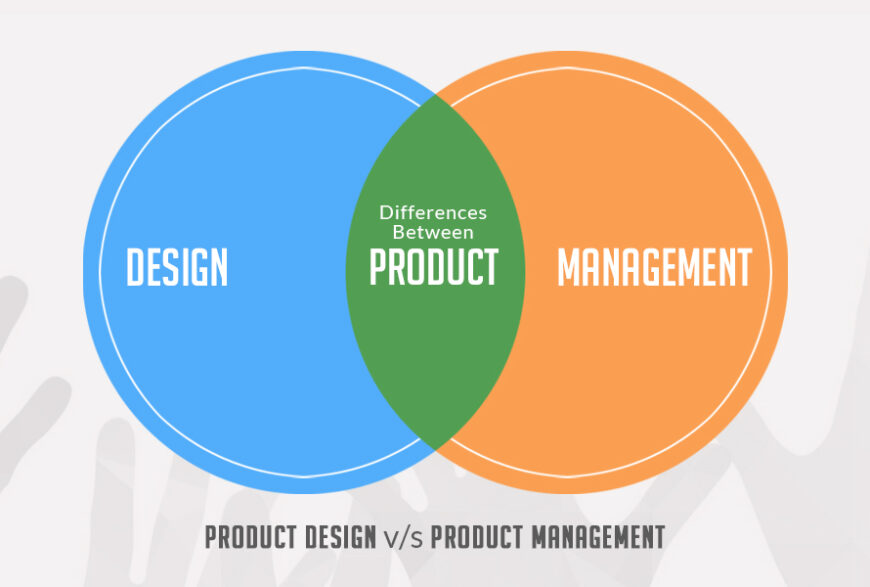Are you considering a career in product design or product management? Knowing the difference between these disciplines can help you decide which path to take. In this blog post, we’ll provide an overview of each one and compare them side-by-side so you can make an informed decision. Product Design is the process through which designers create attractive visuals for products both digital and physical, while Product Management looks at the entirety of any given product’s life cycle. This means maintaining relationships with stakeholders, setting goals and timelines as well as taking into account market trends when conceptualizing products’ features and functions – essentially creating customer value. With this blog post, we’ll explore these two key areas of technology engineering; delving deeper into what they do differently so that ultimately it’s easier for you to better choose your career path.
Table Of Content
- Understanding Product Design
- Learning the Art of Product Management
- Identifying the Key Differences Between Product Design and Product Management
- Utilizing Human-Centered Design to Improve User Experience
- Managing Development Teams for an Effective Launch
- Optimizing Your Products for Maximum Efficiency and ROI
- Final Thoughts

Understanding Product Design
Product design is a major process that entails the creation and growth of new products, as well as improving the performances of existing items. It involves several activities from concept development to prototyping to testing before finally manufacturing and marketing these innovative functional products. Understanding product design will prove important for business entities looking forward to creating inventive and functional products that consumers demand. The benefits of product design are multifarious including improved appeal in products/services, cost-efficientness and superior usability. As opposed to concentrating on the requirement from the users’ side what they want helps create products that not only have functionality but also have aesthetic appeal and are easy to use as well as improving the production process leads to efficient as well as cost-effective manufacturing and increased profitability for the business. Understanding product design is a must for anyone involved in product development because it can help bring about better products and most importantly, a more successful business.
Learning the Art of Product Management
Product management is an integral part of any company or business trying to build a successful product that accomplishes the desired goals of its target audience. At its core, product management involves a variety of tasks that require a deep understanding and knowledge of the customer, market trends, and the larger aims of the organization. A large part of this process involves overseeing the design and development phase. Here, principles of UI/UX design come into play. As seen in Eleken’s approach to UI/UX design, a magnificent example of well-executed UI/UX design is shown by incorporating user-friendly interfaces and intuitive navigation so that not only is their end product engaging but also enhances the overall user experience. With proper attention, and focus on each of these tasks, a product manager is then able to create a successful product that serves the customer well. This in turn helps drive growth for the business as it relates to its products.
Identifying the Key Differences Between Product Design and Product Management
In bringing a product to life, two roles essential for this process are product design and product management. Though similar in their nature, these positions look at product development from different angles. Product designers majorly focus on coming up with the physical or digital form while considering factors like functionality, usability, and aesthetics as per requirements. Product managers manage the entire development process ensuring smooth operations alignment to company goals. Considering differences between product design and product management optimizes workflow and enhances success of products.
Utilizing Human-Centered Design to Improve User Experience
Human-centered design is vital in crafting a seamless user experience. It focuses on the requirements, needs, and wishes of the end user and therefore results in intuitive efficient as well effective products/services hence creating efficiency. Businesses cannot be tampered with by understanding end users’ pain points along with aspirations. Guided by these two methods of improvement I deal with users through a competitive consumer market with human-centered design to success.
Managing Development Teams for an Effective Launch
The management of development teams for an effective launch is a big aspect of any successful project. With so much moving metal involved in the development of software, good team management to ensure that everything runs as it should and the final product achieves its goals requires clear communication between developers, and project managers amongst many other stakeholders involved in a project.[. By laying out an organized workflow and clearly defining roles and expectations for the team members, a development team can increase its productivity and efficiency as a unit to deliver high-quality products that are not only delivered but also exceed the client’s expectations. Effective team management is solely responsible for a successful launch and ultimately will help businesses in staying ahead of any competition.

Optimizing Your Products for Maximum Efficiency and ROI
Today’s fiercely competitive marketplace provides all companies with the opportunity to optimize performance and increase profitability. One strategy that seems to work consistently is creating optimized products for maximum efficiency and ROI. When product design focuses on creating efficient solutions, the results can be lowered costs, increased productivity, and final positive profits. Through analysis of the product lifecycle and identifying areas of improvement, companies can make strategic changes that yield tremendous returns. Optimizing products should be at the forefront of any business interested in staying on top of the game whether it’s streamlining production processes or enhancing product features.
Final Thoughts
In conclusion, product design and product management are two different disciplines that live together in your workflow. Understanding the overlap of these two disciplines can be invaluable when dealing with your workflow. With an understanding of how a product looks before it is manufactured and what skillset you need for successful product management, you will have something solid to build upon. Human-centered design enables you to consider users’ needs while developing and launching your products. Through effective management of development teams, you can assure a successful launch. And finally optimizing your products for maximum efficiency as well as ROI will give you the best possibility of succeeding in the process. Getting to know these fundamental principles will finally help every business understand the value of their products and therefore work smarter to reach higher levels of customer satisfaction.

















